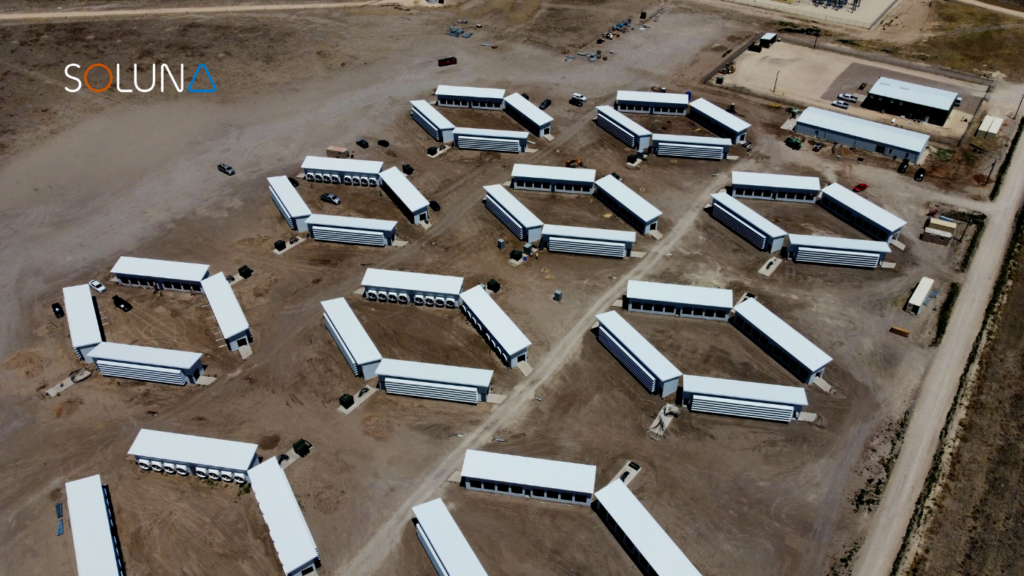By Nicola Phillips, Contributing Writer
One of the necessities in transitioning to renewable energy is risk mitigation. We have relied on fossil fuels for millennia. Upending that longstanding paradigm has enormous benefits, both environmental and financial, but also presents challenges. Chief among these challenges are the intermittent nature of renewable energy and the difficulty in matching supply and demand. Intermittency creates unpredictability — shifting energy prices, wasted energy or periods of no energy at all. In other words, a transition to renewable energy will require not just significant energy production but also new supporting infrastructure.
Enter Bitcoin mining.
Critics of Bitcoin often point to its environmental impact. A recent report by KPMG doesn’t just challenge those critiques, but examines how Bitcoin might in fact provide environmental benefits.
KPMG breaks down four environmental strategies and Bitcoin’s applicability: use of renewable energy, demand response, recycled heat, and methane reduction. I’ll attempt to summarize each, as well as discuss Bitcoin as a risk mitigation strategy for the energy sector.
So, can Bitcoin be a catalyst for the energy transition? And how?
Renewables and Flexible Loads
In a highly competitive environment, Bitcoin miners want to maximize returns by using the cheapest energy available. Increasingly, those sources are renewable — under-utilized resources like wind, solar, hydro, or geothermal.
Bitcoin mining, as many critics have noted, uses a lot of energy. But that could actually be a positive. Renewable energy has a profitability problem, despite its huge production cost advantage, because of its intermittency. In times of high supply and low demand, there is a surplus of energy that needs to be used, or will be curtailed and wasted.
Bitcoin is well-suited to the ebbs and flows of wind or solar energy. Bitcoin mining operations can be powered up or down in sync with available supply and demand without disrupting the integrity of the process. During periods of high demand, operations can shut down altogether, and when demand slows and supply outpaces it, the facilities can absorb the excess energy.
Thus, Bitcoin mining creates a market for stranded, curtailed energy and addresses the major problem of matching supply and demand.
Demand response programs, which reward participants for redirecting their energy use during periods of high demand, are already commonplace in many states. Bitcoin mining facilities can actively participate in these programs if they so choose, becoming a fully integrated and load-balancing element of the energy grid infrastructure. There is potential for abuse of these programs, but mining companies operating in good faith have a significant opportunity to help stabilize energy grids that have serious demand-supply imbalances.
Recycling and Repurposing
Bitcoin mining produces a lot of heat because of the sheer computing power required. Again, there is a way to reframe this narrative as a potential boon. Excess heat produced by mining equipment can be used for food production, home heating, and a slew of other purposes.
Mining facilities also have the opportunity to put recycled waste materials, like methane, to new use.
Methane is 30x more potent at trapping heat over a 100-year time period than carbon dioxide, and, because of its short lifespan, 85x more potent over a 20-year time period.
One common way methane is released into the atmosphere is from landfill decomposition. Here, in an inverse scenario to that of recycled heat, Bitcoin mining facilities have the opportunity to repurpose spewed methane to power operations. It’s not a perfect solution by any means, but it’s another example of the flexibility of Bitcoin to be deployed in creative ways.
Risk Mitigation
The question then is: is Bitcoin serving the energy transition in meaningful ways? It depends on who you ask, certainly. But the potential is there.
As money pours into climate mitigation and (to a lesser extent) adaptation efforts, it’s critical to examine which efforts are actually beneficial. It’s also worth approaching the problem from many angles.
The big existential — and physical — challenge in transitioning to renewable energy is that our existing energy grids were never designed to handle these sorts of operations. Tearing down and beginning again is a nonstarter, so what we’re left with is retrofitting that outdated and deteriorating infrastructure for an entirely new way of producing and supplying energy. As the KPMG report suggests, Bitcoin mining could well be part of that equation.




